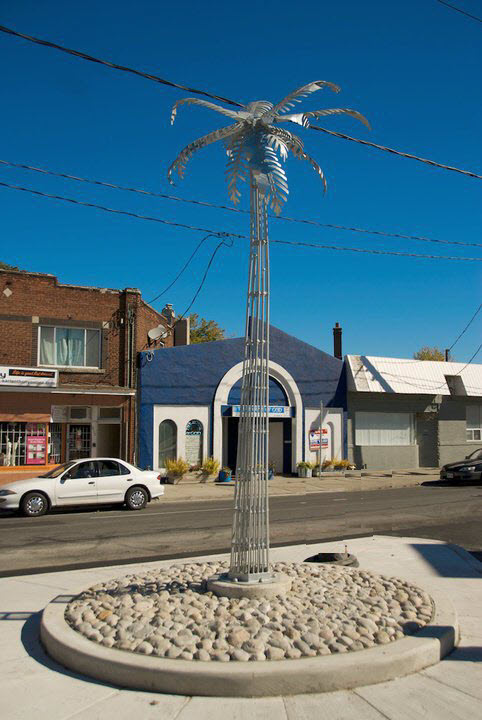We've covered these issues in a few other threads.
But maybe not everyone has a chance to read those posts, so I'll try to answer some of the questions/comments here.
1. The average life a of a Toronto street tree is around 7 years (that includes all types of plantings, though the stat was last established prior to higher quality
planting conditions becoming more common. (ie. during the square box planters everywhere era).
2. The City actually does invest in new trees, all plantings are watered for their first year, sometimes for their first two. After that, absent irrigation they are on their own (rainfall).
3. If trees are planted by a developer or by third-party contractor, they are typically under warranty for 2 years from the date of planting. So if the City discovered them dead, or close to same
the contractor must replace the tree.
4. The high failure rate is a function of several things:
1) Unfavourable planting conditions, this is particularly true with the old 'square box' planters, but event he typical old covered concrete pits aren't great. The former provides far
too little room for root growth; while the latter could be better for that, but its bigger sin is denying the tree enough water.
Tree trenches or large scale, multi-tree planters are by far the best growing conditions for street trees, to see the difference they make, go look at the planters outside Maple Leaf Square at 11 York street.
They're not that old, but coming in beautifully! (so much so, that they shaded out the understory plants, the thinning may be required in a few years)
https://www.google.ca/maps/place/11...1!3m1!1s0x882b34d4d83edf17:0x694505991c491b7a
Part of providing those enhanced condition is also designing planters, where possible to end up w/less salt in them. Note the York St. example which has planter elevated above the sidewalk level, reducing salt from the road somewhat (there will still be spray), but mostly eliminating it from the sidewalk side.
The success of the larger planters is also that the trees can share soil/nutrients and water across the larger space. Some species will be more 'competitive' for
resources, but often trees in the same species will network at the root level and 'share' resources from tree to tree.
Soil conditions are crucial and that was clearly an issue at Bloor St. where the it was suggested that the initial contractor put in substandard soils. (soils w/poor drainage and inadequate
nutrients).
An important point to consider about closed in trees is that there is little or no opportunity to re-charge the nutrients in the soil naturally (as happens from decaying leaves). That's an important
bonus from larger multi-tree (open) trench planters, where the fall leaves can be left to decay, at least for a little while.
2) Species choice is crucial. I have said here repeatedly that London Plane is a poor choice for typical Toronto street conditions. It can grow here, but requires better than average conditions (like a sizeable lawn, as well as extra TLC. They really don't care for road salt either. There are various other trees that also show iffy results, Sugar Maple, while it can be amazing your backyard, or local park is not keen on typical street tree conditions, Red Maple often fares poorly, and Birches hate it (not very pollution tolerant).
There are many better choices, notably Silver Maple, most Oaks, Honey Locust, the dutch-elm resistant version of American Elm, among others.
Ashes were, historically a very good choice, which is why they are so common, particularly in parts of Scarborough and North York. The Emerald Ash Borer has unfortunately changed that reality.
3) Related to the above, diversity of choices is important. Any and every tree species is vulnerable to one or more diseases or pests. If something goes wrong (ie. Dutch Elm Disease)
and you've planted all one species, you lose 100% of the trees!
A good rule of thumb is that any given block should have trees from three different genus' and as many as 10 different species. This prevents catastrophic loss from the aforementioned causes.
4) Things are improving. The City now tries to require trenches during new large scale development projects. However, this isn't always possible, due to utilities and or constrained sidewalk width.
The question is then one of doing the best you can.
The species issue is one City Forestry is aware of, and trying to address. The problem occurs when BIAs or others have landscape architects who are in love with a landscape they've seen somewhere else
particularly an allee or the like, often done w/one-species, usually one not native to Toronto. They often place considerable pressure to deliver their 'vision' of the landscape, irrespective of whether it will actually work.





